�
ANALOG DESIGN ESSENTIALS
ANALOG DESIGN ESSENTIALS
by
Willy M. C. Sansen
Catholic University, L euven, Belgium
�
A C.I.P. Catalogue record is available from the Library of Congress.
ISBN-10 0-387-25746-2 (HB)
ISBN-13 978-0-387-25746-4 (HB)
ISBN-10 0-387-25747-0 (e-book)
ISBN-13 978-0-387-25747-1 (e-book)
Published by Springer,
PO Box 17, 3300 AA Dordrecht, The Netherlands.
www.springer.com
Printed on acid-free paper
All Rights Reserved
© 2006 Springer
No part of this publication may be reproduced, storedin a retrieval system, or transmitted
in any form or by any means, electronic, mechanical, photocopying, microfilming, recording
or otherwise, without written permission from the Publisher, with the exception
of any material supplied specifically for the purpose of being entered
and executed on a computer system, for exclusive use by the purchaser of the work.
Printed in the Netherlands.
�
Dedication
This book is dedicated to my wife
Hadewych Hammenecker
�
Contents
Chapter #1
Comparison of MOST and bipolar transistors
Chapter #2
Amplifiers, source followers and cascodes
Chapter #3
Differential voltage and current amplifiers
Chapter #4
Noise performance of elementary transistor stages
Chapter #5
Stability of operational amplifiers
Chapter #6
Systematic design of operational amplifiers
Chapter #7
Important opamp configurations
Chapter #8
Fully-differential amplifiers
Chapter #9
Design of multistage operational amplifiers
Chapter #10
Current-input operational amplifiers
Chapter #11
Rail-to-rail input and output amplifiers
Chapter #12
Class AB and driver amplifiers
Chapter #13
Feedback voltage and transconductance amplifiers
Chapter #14
Feedback transimpedance and current amplifiers
Chapter #15
Offset and CMRR: random and systematic
Chapter #16
Bandgap and current reference circuits
Chapter #17
Switched-capacitor filters
Chapter #18
Distortion in elementary transistor circuits
Chapter #19
Continuous-time filters
Chapter #20
CMOS ADC and DAC principles
Chapter #21
Low-power sigma-delta AD converters
Chapter #22
Design of crystal oscillators
Chapter #23
Low-noise amplifiers
Chapter #24
Coupling effects in mixed analog-digital ICs
Index of subjects
1
51
89
117
149
181
211
239
263
291
301
337
363
389
421
457
485
519
567
603
637
677
711
743
773
�
011
Analog design is art and sci-
ence at the same time.
It is art because it requires
creativity to strike the right
compromises between the
specifications imposed and
the ones forgotten.
It is also science because
it requires a certain level of
methodology to carry out a
design, inevitably leading to
more insight in the compro-
mises taken.
This book is a guide
through
this wonderful
world of art and science. It
claims to provide the novice designers with all aspects of analog design, which are essential to
this understanding.
As teaching is the best way to learn, all slides are added on a CD-ROM, with and without
the comments added as notes in the pdf files. The reader is suggested to try to explain parts of
this course to his fellow designers. This is the way to experience and to cultivate the circles of
art and science embedded in this book.
All design is about circuits. All circuits contain transistors. Hand-models are required of these
devices in order to be able to predict circuit performance. CAD tools such as SPICE, ELDO,
SPECTRE, etc. are then used to verify the predicted performance. This feedback loop is essential
to converge to a real design. This loop will be used continuously in this book.
by means
012
For the design of analog
integrated circuits, we need
to be able to predict the per-
formance
of
simple expressions. As a
result,
simple models are
required. This means that
the small-signal operation of
each transistor must be
described by means of as
few equations as possible.
Clearly the performance of
the circuit can then only be
described in an approximate
way. The main advantage
however,
is that transistor
1
�
2
Chapter #1
sizing and current levels can easily be derived from such simple expressions. They can then be
used to simulate the circuit performance by means of a conventional circuit simulator such as
SPICE or ELDO.
In these simulators, models are used which are much more accurate but also much more
complicated. These simulations are required afterwards to verify the circuit performance. The
initial design with simple models is the first step in the design procedure. They are aimed
indeed at the determination of all transistor currents and sizes, according to the specifications
imposed.
We start with MOST devices, although the bipolar transistor are historically first. Nowadays
the number of MOS transistors integrated on chips, vastly outnumber the bipolar ones.
013
Indeed, previously CMOS
devices were reserved for
logic as they offer the high-
est density (in gates/mm2).
Most high-frequency cir-
cuitry was carried out
in
technology. As a
bipolar
result, a lot of analog func-
tions were realized in bipo-
lar technology. The highest-
frequency circuits have been
realized in exotic technol-
ogies such as GaAs and now
InP technologies. They are
quite
expensive however
and really reserved for the
high frequency end.
The channel length of CMOS transistors shrinks continuously however. In 2004, a channel
length of 0.13 micrometer is standard but several circuits using 90 nm have already been published
(see ISSCC). This ever decreasing channel length gives rise to ever increasing speeds. As a result,
CMOS devices are capable of gain at ever higher frequencies.
Today CMOS and bipolar technologies are in competition over a wide frequency region,
extending all the way to 10 and even 40 GHz, as predicted in this slide. For these frequencies
the question is indeed, which technology fulfills best the system and circuit requirements at a
reasonable cost. BICMOS is always more expensive than standard CMOS technology. The
question is, whether the increase in cost compensates the increase in performance?
�
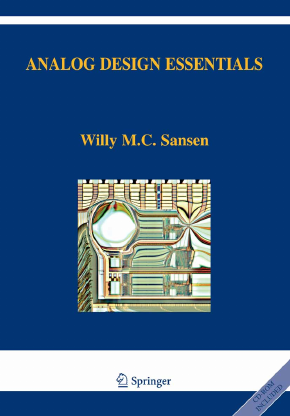
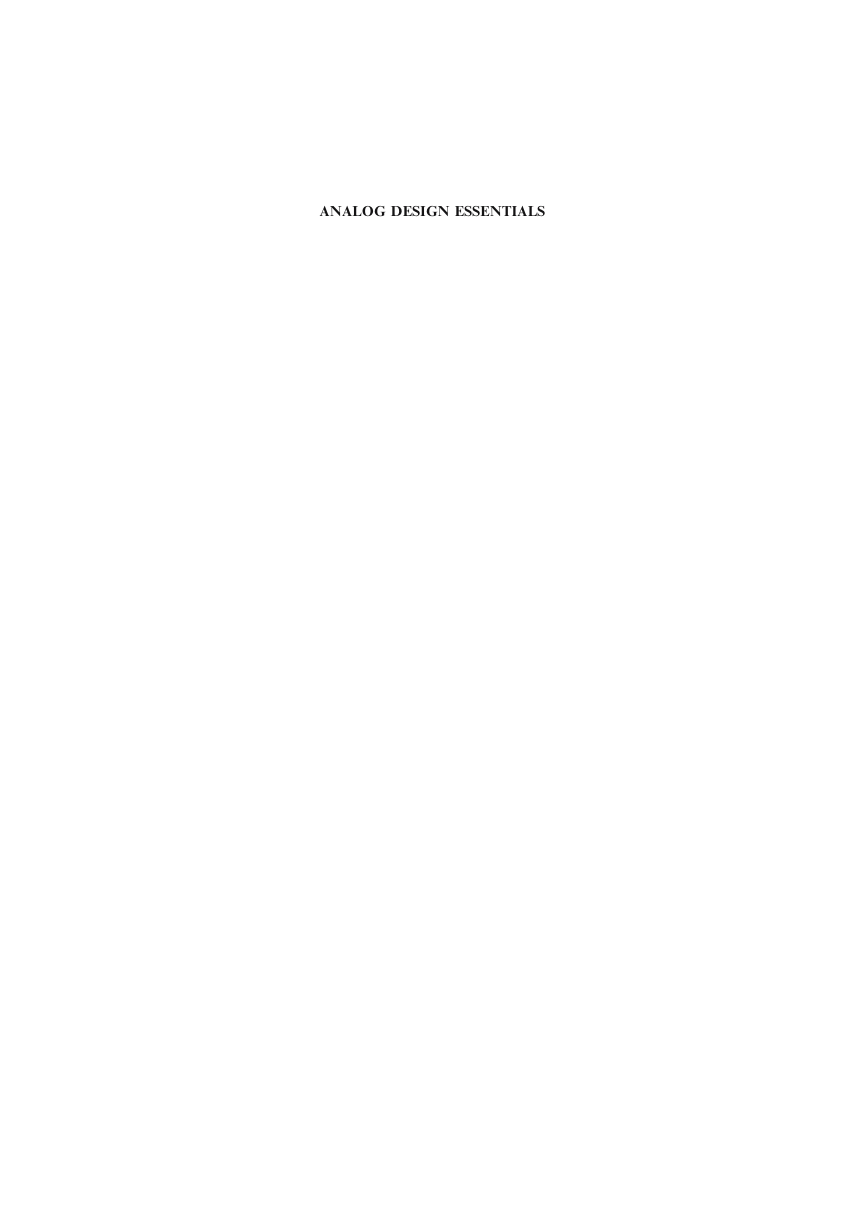

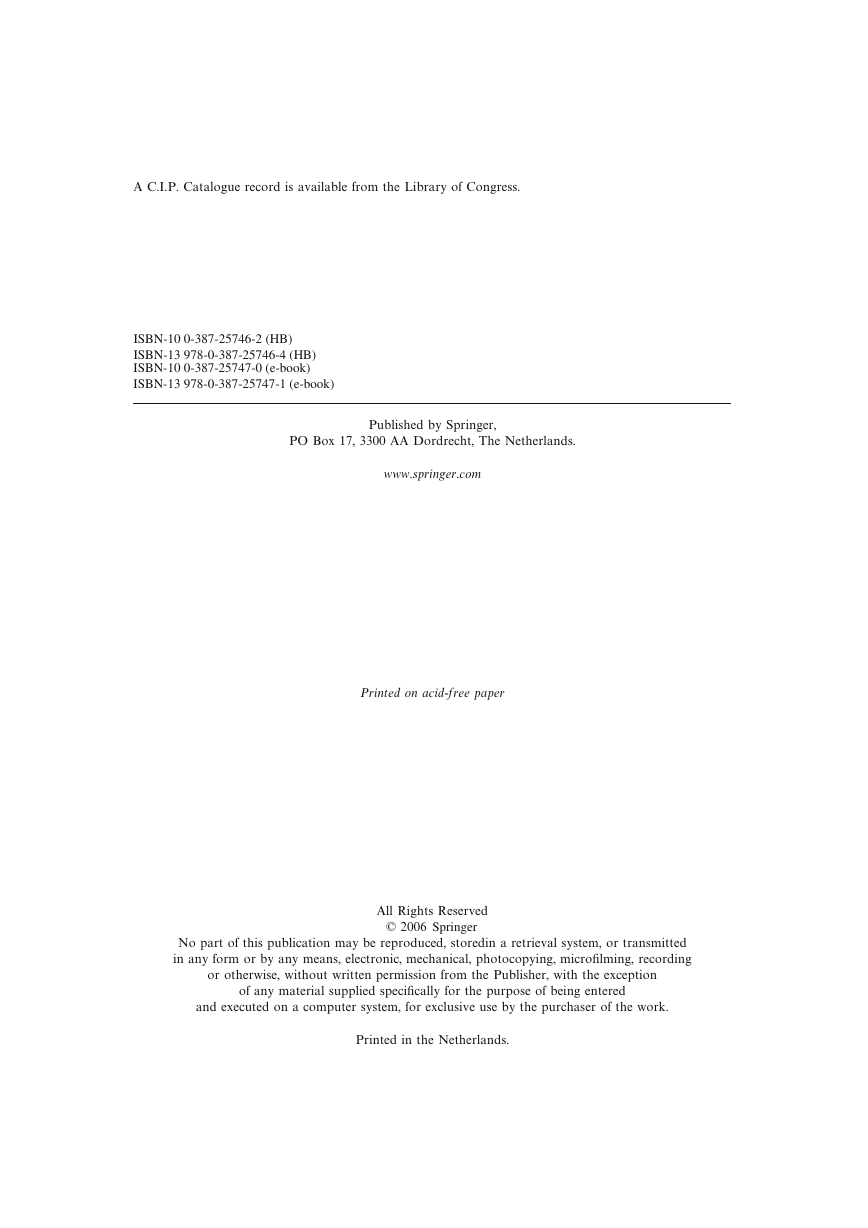
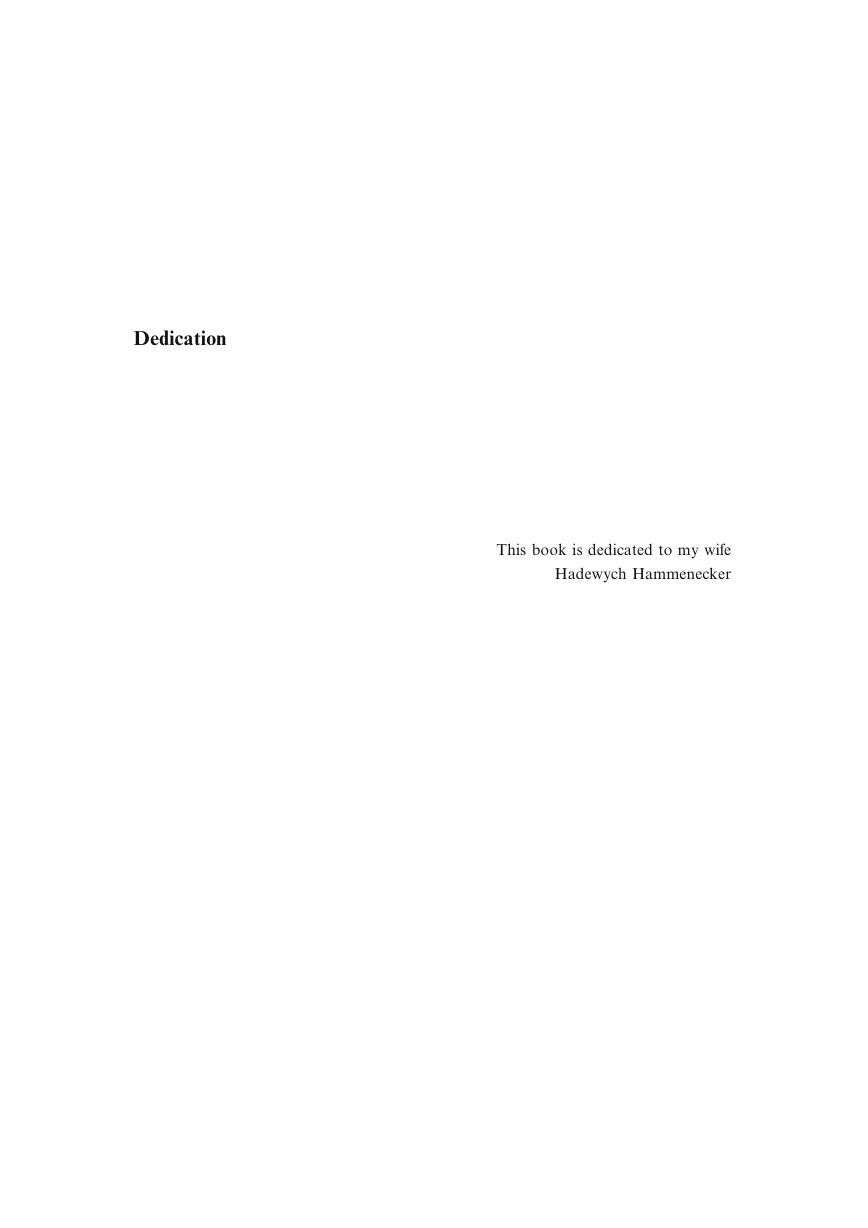
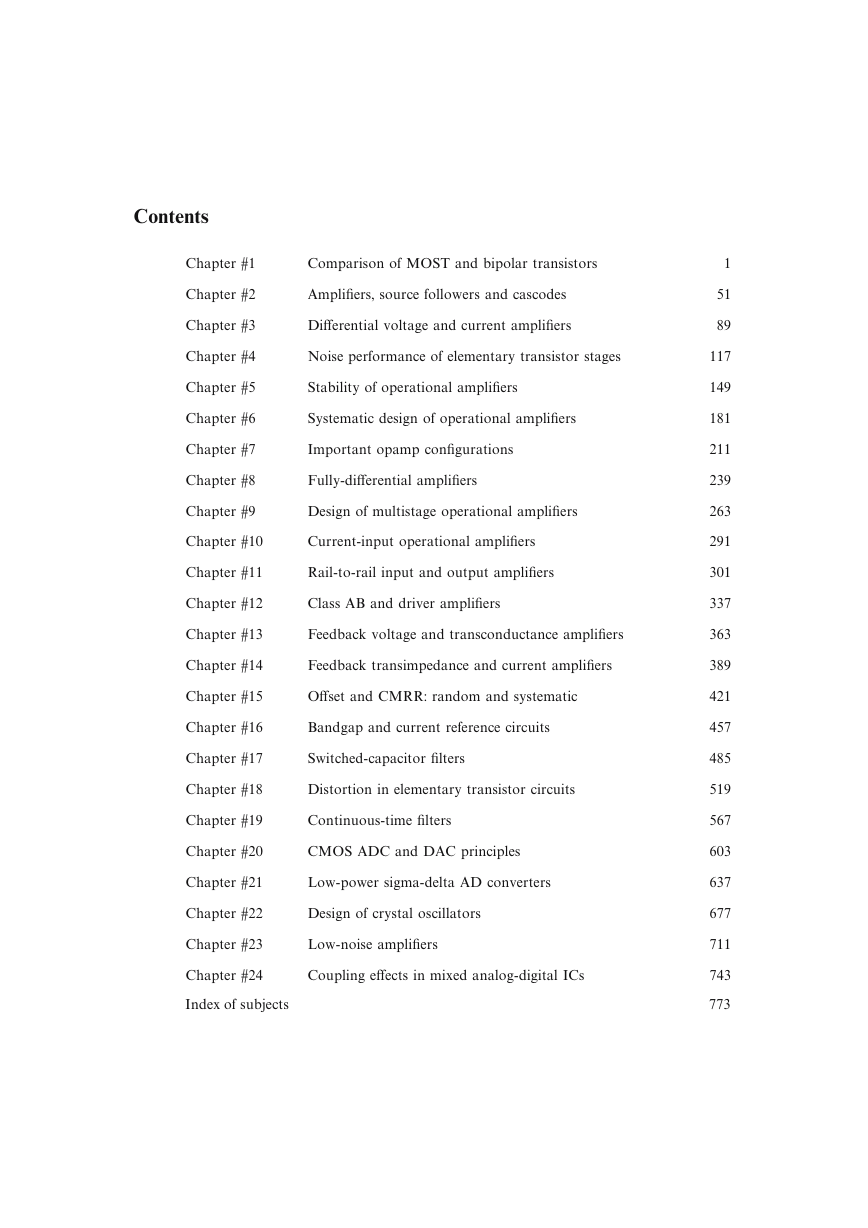

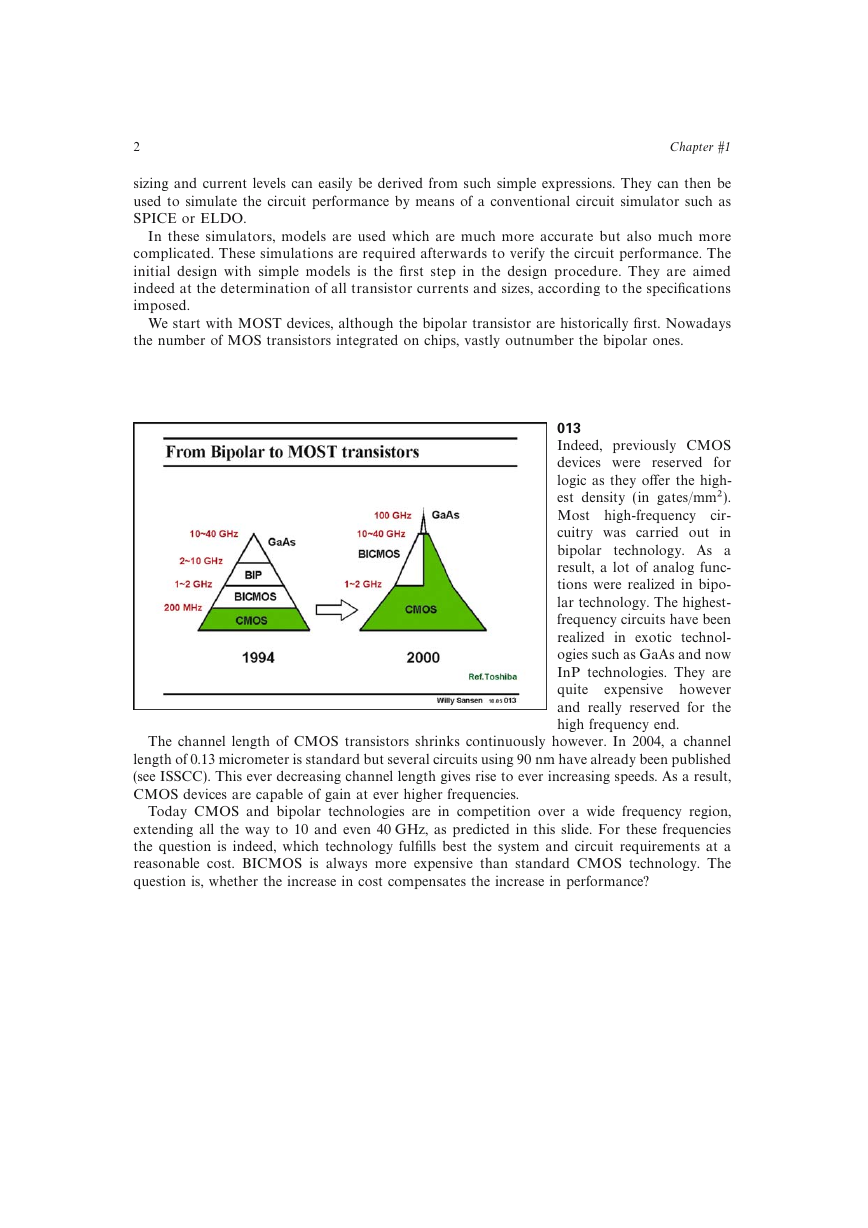








 2023年江西萍乡中考道德与法治真题及答案.doc
2023年江西萍乡中考道德与法治真题及答案.doc 2012年重庆南川中考生物真题及答案.doc
2012年重庆南川中考生物真题及答案.doc 2013年江西师范大学地理学综合及文艺理论基础考研真题.doc
2013年江西师范大学地理学综合及文艺理论基础考研真题.doc 2020年四川甘孜小升初语文真题及答案I卷.doc
2020年四川甘孜小升初语文真题及答案I卷.doc 2020年注册岩土工程师专业基础考试真题及答案.doc
2020年注册岩土工程师专业基础考试真题及答案.doc 2023-2024学年福建省厦门市九年级上学期数学月考试题及答案.doc
2023-2024学年福建省厦门市九年级上学期数学月考试题及答案.doc 2021-2022学年辽宁省沈阳市大东区九年级上学期语文期末试题及答案.doc
2021-2022学年辽宁省沈阳市大东区九年级上学期语文期末试题及答案.doc 2022-2023学年北京东城区初三第一学期物理期末试卷及答案.doc
2022-2023学年北京东城区初三第一学期物理期末试卷及答案.doc 2018上半年江西教师资格初中地理学科知识与教学能力真题及答案.doc
2018上半年江西教师资格初中地理学科知识与教学能力真题及答案.doc 2012年河北国家公务员申论考试真题及答案-省级.doc
2012年河北国家公务员申论考试真题及答案-省级.doc 2020-2021学年江苏省扬州市江都区邵樊片九年级上学期数学第一次质量检测试题及答案.doc
2020-2021学年江苏省扬州市江都区邵樊片九年级上学期数学第一次质量检测试题及答案.doc 2022下半年黑龙江教师资格证中学综合素质真题及答案.doc
2022下半年黑龙江教师资格证中学综合素质真题及答案.doc